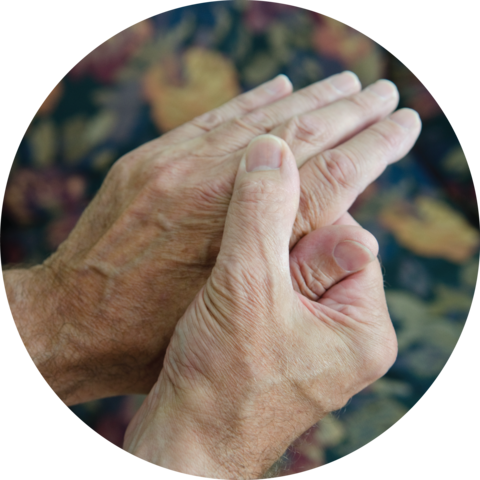
FAST FACTS: Nondrug Pain & Symptom Management
This Fast Fact provides an overview of the basics of Nondrug Pain Treatment Techniques. Nondrug Pain Treatments include activities or experiences that help provide relief of physical and psychological symptoms of pain, either with or without the use of medications.
Mild-to-moderate pain may be relieved by nondrug techniques alone. Moderate-to-severe pain may require medication in addition to nondrug techniques. Some nondrug treatment techniques may require professional oversite to perform.
The caregiver should review all the techniques mentioned below in detail and discuss with their family members’ healthcare team if they have questions or need assistance (see specific FAST FACT for some of the Nondrug Treatment Technique listed below, check with your healthcare provider if you are interested in other Techniques mentioned).
Physical Nondrug Treatment Technique Examples
- Massage

- Cold
- Heat
- Positioning
- TENS
- Acupuncture
- Tai Chi
- Walking
- Yoga
- Qigong
Psychological Nondrug Treatment Technique Examples
- Distraction
- Relaxation
- Music
- Controlled Breathing and Guided Imagery
- Mindfulness-based Mediation
- Cognitive-Behavioral Therapy
Advantages to Nondrug Treatment Techniques
- Low Cost
- Low risk of side effects
- Improved sleep
- Improved interpersonal relationships
- Increase in person’s sense of control and hope
- Decrease in undesired reactions (such as: anxiety, depression, aggression)
Possible Disadvantages Nondrug Treatment Techniques
- A technique that works well for one may not work for someone else
- Some techniques require special training (such as: Massage, Music Therapy, Guided Imagery, etc.).
What Caregivers can do to help their Family Member with Abdominal Pain
- Determine which Nondrug Treatment Technique is of interest to you and encourage them to use this as a pain management treatment
- Ensure you are trained appropriately prior to implementing any Nondrug Treatment Technique, speak with a professional or your healthcare team to determine correct technique or where to find training.
- Seek assistance as needed with implementing Nondrug Treatment Techniques for family member (i.e. turn on music, position cold pack, etc.)
- Document all Nondrug Treatment Techniques on your Pain Diary and log your pain information before and after use of Nondrug Treatment.
Adapted from:
- Beth Miller-Kraybill, Nondrug Pain & Symptom Management, and
- Nursing Home Pain Management Algorithm Clinical Trial, R01 NR009100, 7/1/05 – 4/30/10; Mary Ersek (PI)
Used with permission of Mary Ersek and HPNA (2009).
References:
- Swedish Medical Center. Nursing Assistant End-of-Life: Computerized Educational Program. Pittsburgh, PA: Hospice and Palliative Nursing Association; 2006.
- Reuben, D., Herr, K., Pacala, J., Pollock, B., Potter, J. & Semla, T. (2018). Geriatrics At Your Fingertips, 20th Ed. New York, NY: American Geriatrics Society (pp 247-268).
Revised 3/2020
